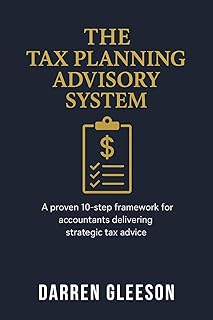In the realm of superannuation, there’s a new tax frontier on the horizon known as Division 296, poised to impact individuals with super balances exceeding $3 million. While this measure is not yet law, the proposed changes are causing a stir among those in the financial landscape. The crux of Division 296 is to levy additional tax on investment growth for those with substantial super balances. For individuals whose balances breach the $3 million mark by the end of the financial year, this tax will come knocking.
The rationale behind Division 296 is to fine-tune the existing tax concessions on super earnings, which currently stand at 15% during the accumulation phase and 0% in retirement. By singling out larger balances for extra tax, the government aims to better target these concessions. The impact of Division 296 falls on individuals with total super balances exceeding $3 million, with the tax rate set at 15% on the earnings attributed to the portion above the threshold. This calculation intricately considers the taxable proportion of one’s balance that surpasses the $3 million benchmark.
Notably, the $3 million threshold remains static, unindexed for inflation, potentially ensnaring more individuals under its tax umbrella as super balances escalate over time. However, couples can jointly possess up to $6 million without triggering this tax. For self-managed super funds (SMSFs), the collective value may surpass $3 million, yet if no individual member breaches the threshold, the Division 296 tax remains dormant.
The mechanics of Division 296 delve into the minutiae of taxable earnings, factoring in adjustments to super balances to capture investment growth exclusively. This means that only the increase in value, excluding contributions and withdrawals, is subject to tax. While this approach has garnered criticism for taxing unrealized capital gains, it underscores the complexity and nuances of the impending tax regime.
Beyond the numerical intricacies, the practical implications of Division 296 loom large. The proposed tax could trigger a cascade of effects on super funds, particularly those heavily invested in illiquid assets. The potential for significant tax fluctuations tied to market movements at fiscal year-end poses a challenge for investors navigating this new tax terrain.
As the financial landscape braces for the impending changes, the implications of Division 296 reverberate across the superannuation spectrum. With the tax horizon evolving, individuals and funds alike must navigate this uncharted territory, armed with insights to weather the storm of tax reform in the superannuation domain.
📰 Related Articles
- Debate Over Superannuation Tax Reforms and Division 296 Proposal
- Survey: Majority of Older Australians Support Tax Increase on High Super Balances
- Superannuation Sector Braces for Division 296 Tax Compliance Overhaul
- Division 296 Tax Plan Sparks Wealthy Exodus Concerns in Australia
- Albanese Government Plans Super Tax Changes Impacting Wealthy Account Holders





